Today we’re going old school, really old school….Yes before we used these things called “cell phones” and even before those other things called “telephones” were invented, there was a super simple way of speaking to someone over distance (mind you not more than 300 feet) and no it’s not yelling, we’re talking about a Voicepipe. Also know as speaking tubes, voicepipes were used on ships and in wealthy homes/offices in the 19th century to communicate. You still see them on playgrounds, they are those funnel looking things my kids always ask about….but I digress….did you know you can make your own voicepipe in about 2 minutes flat using a c couple items from the hardware store?


This project is part of the STEAM summer camp series exploring different senses. Today’s topic and the final in the series is HEARING and this project immediately came to mind. You see I am a bit of a tubing fanatic. I love projects with clear tubing, it’s one of those materials that just speaks to me…pun intended….and a couple months go we discovered that wide tubing transmits sound really well. So well, in fact you can hear someone breathing or whispering on the other end. On top of being a fun way to learn about how sound is transmitted, this project is also ridiculously easy to make. In fact I tried to complicate in some way but just couldn’t do it ….ha!
This post contains affiliate links to products I love and recommend to my readers, plus it keeps this little blog o’mine afloat! Thank you!
Simple Engineering Project: DIY Voicepipe
Note: Do not use tubing with a small inner diameter. IT WON’T WORK! I’ll talk about why later in this post.
Materials
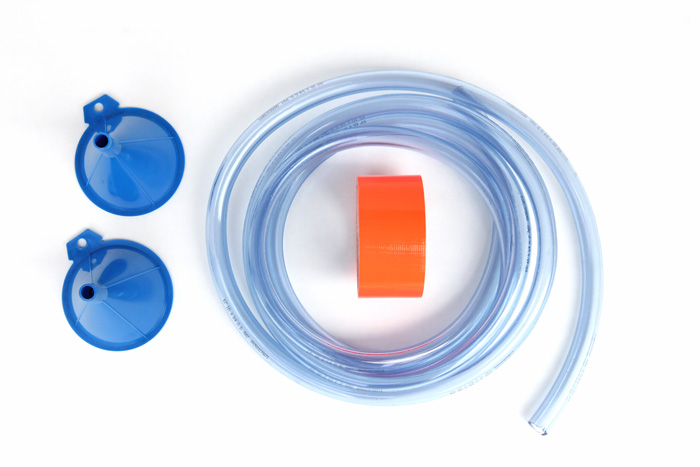
The best thing to do is use tubing whose inner diameter matches the diameter of the funnel end. Then everything just snaps together.
- Plastic Tubing– We used this 1/2-Inch Inner Diameter Clear Vinyl Tubing
– get as long a piece as you can buy! TIP: I found it on Amazon at half the price I paid for it in the hardware store.
- Two plastic funnels
- Duct Tape
Instructions
I don’t know that you really need instructions on this one but….
- Step One Place a funnel in each end of the tubing.
- Step Two Secure the funnels and tubing together with duct tape.
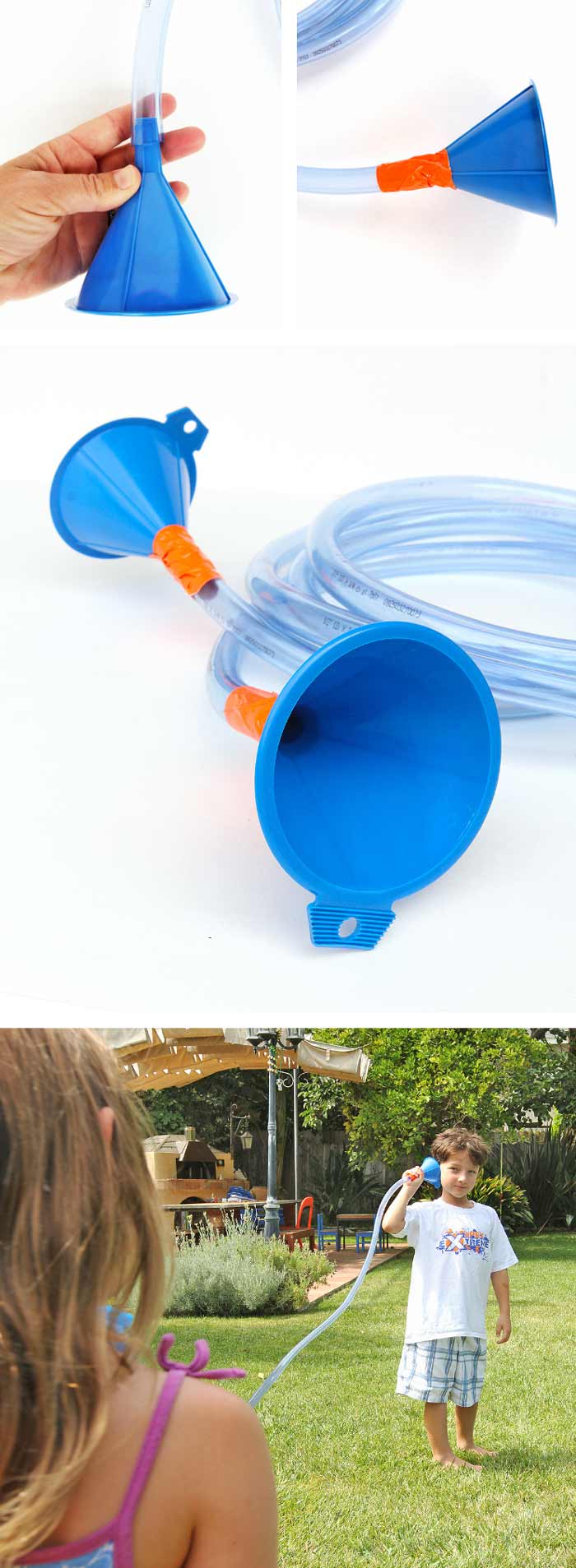

A little science behind speaking tubes
Sound is the vibration of air particles. When you speak, your voice causes the air particles around your mouth to vibrate and that causes a wave effect on the air particles nearby, transmitting the sound of your voice over distance. Eventually the wave runs out of energy and the sound can no longer be heard. Voicepipes concentrate the sound waves and cause them to be heard at longer distances than you would hear without using them. They also block outside sounds from disturbing what you are hearing.
An interesting principle when using a voicetube is the impedance of the tube. In plain speak, if the tube is too small it will absorb the sound rather than transmit it. To avoid any impedance you need to use tubing with a larg inner diameter. Trust me we learned this the hard way! I originally tried this experiment with irrigation tubing because it’s long and inexpensive, but it didn’t work at all. Now I know why!


Looks Like
Alexander Graham Bell. Let’s talk telephones. Certainly voicepipes were great for communicating within a home or ship but would never be a viable way to transmit sound over very long distances. Scientists and inventors in the mid 1800’s knew that being able to transmit voice over long distances using wire, much like telegraph machines did, was the next step in long distance communication and the race to invent the telephone began. Alexander Graham Bell was a scientist who studied sound and worked with the deaf, in fact his mother and wife were both deaf. In the late 1800’s he started working on the idea of a harmonic telegraph with the help of assistant Thomas A Watson. In 1876 they were able to communicate from separate rooms using the invention, famously Bell said, “Mr. Watson, Come here, I want to see you”, thus marking history as the very first telephone call. Interestingly enough an inventor named Elisha Gray was also working on a similar invention at the time and there is some controversy involved in the eventual awarding of the patent to Bell. This controversy is the stuff movies are made of and you can read it here. Another fun fact about Mr. Bell is that he considered the telephone to be an intrusion on his scientific exploits and refused to have one in his office!
Conclusion
Playing around with a voicepipe is a great way to talk about how sound transmission works and the humble beginnings of the one device most of us can’t live without, our phones! P.S. If you have a treehouse these would be an awesome way to communicate from the ground up!
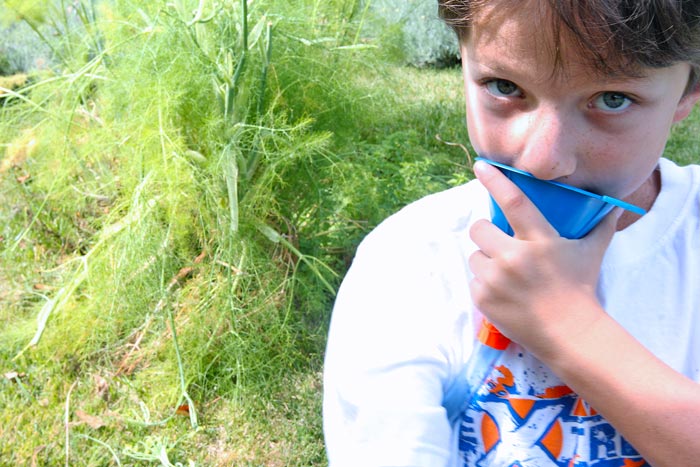

Are you ready for more amazing STEAM projects and our virtual STEAM summer camp?



Left Brain Craft Brain Modern Art Steady Hand Game
Little Bins for Little Hands Pop Rocks Science Exploring Viscosity
What Do We Do All Day Twirling Buzzing Noise Maker
One Time Through How to Learn from a Failed Experiment
Pink Stripey Socks Build Water Xylophones
Frugal Fun For Boys Salt Vibrations: Sound You Can SEE!
Fill your child’s life with more art, design, and science:
Subscribe via email and check out our FB page where I share tons more creative ideas and resources from around the web.
Spread Creativity Like Wildfire: Pin This!
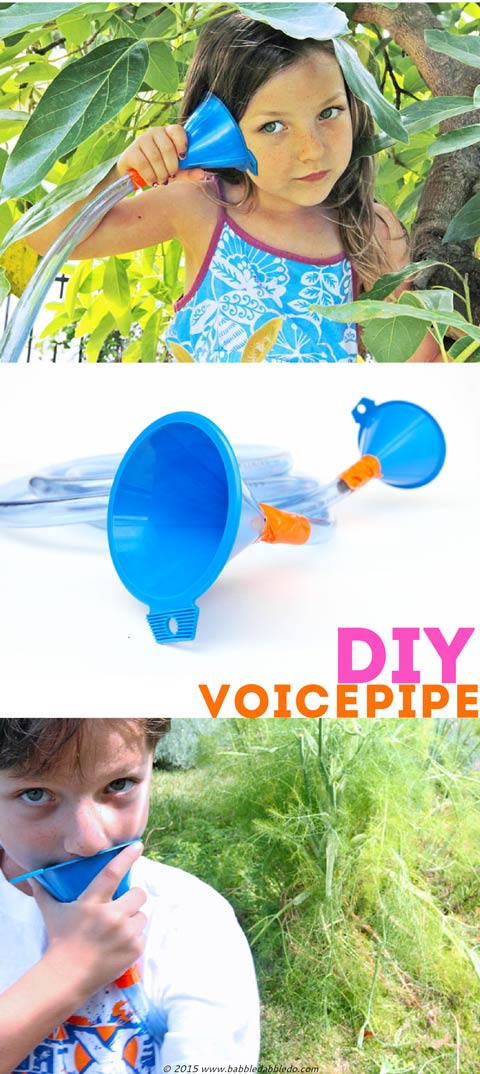

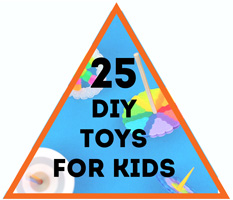
What a fun idea! I’d never heard of that controversy before or that Alexander Graham Bell didn’t want one in his office. How funny. Sadly, we don’t have a treehouse, but I bet my kids would have fun using it between our first and second story.
That’s a great idea Michelle!
Such a neat idea Ana. My son is always asking about those “phones” at the playground. We even have some tubing left over from a recent water pollution factory model we made that we can use! He will love this. Thanks for the great idea!
Those playground ones took ME awhile to figure out too! Hope your son enjoys the project Sue!
So fun! Telephone games never get old with the littles. We’ll have to try it! Thanks for sharing.
Now on to play the telephone GAME with the voice pipe! HA!
I don’t think I realized how simple these are to make! My daughter found plastic tubing and was playing with sounds – she would love this one!
So.Easy. I really did try to make it harder Emma but it wasn’t possible ;)!
This reminds me of when I was a child =) today in a more evolved form
🙂
Excellent suggestion for a DIY project! I remember playing with these when my brother and I were kids 🙂
Thank you! My kids still play with it!